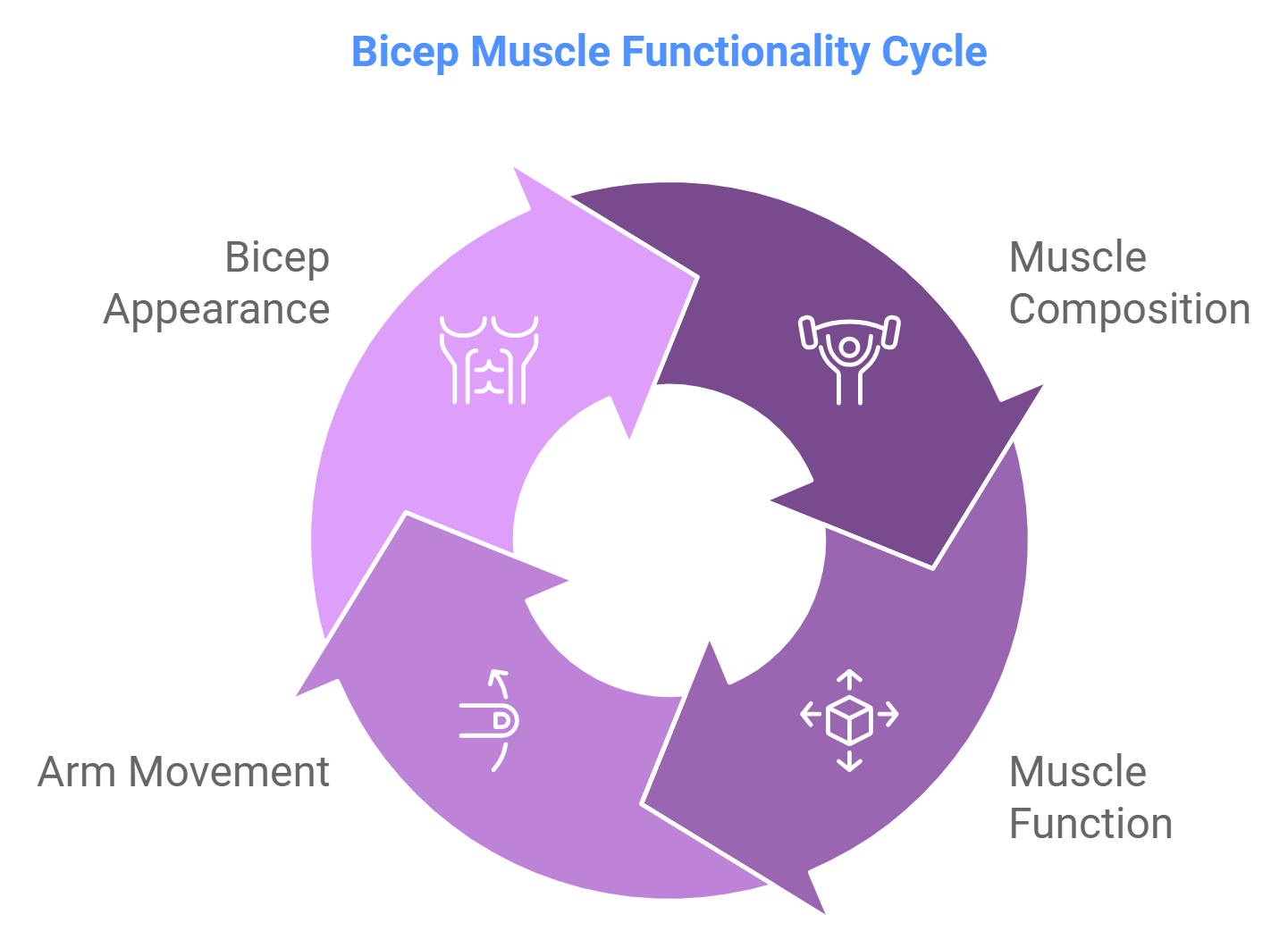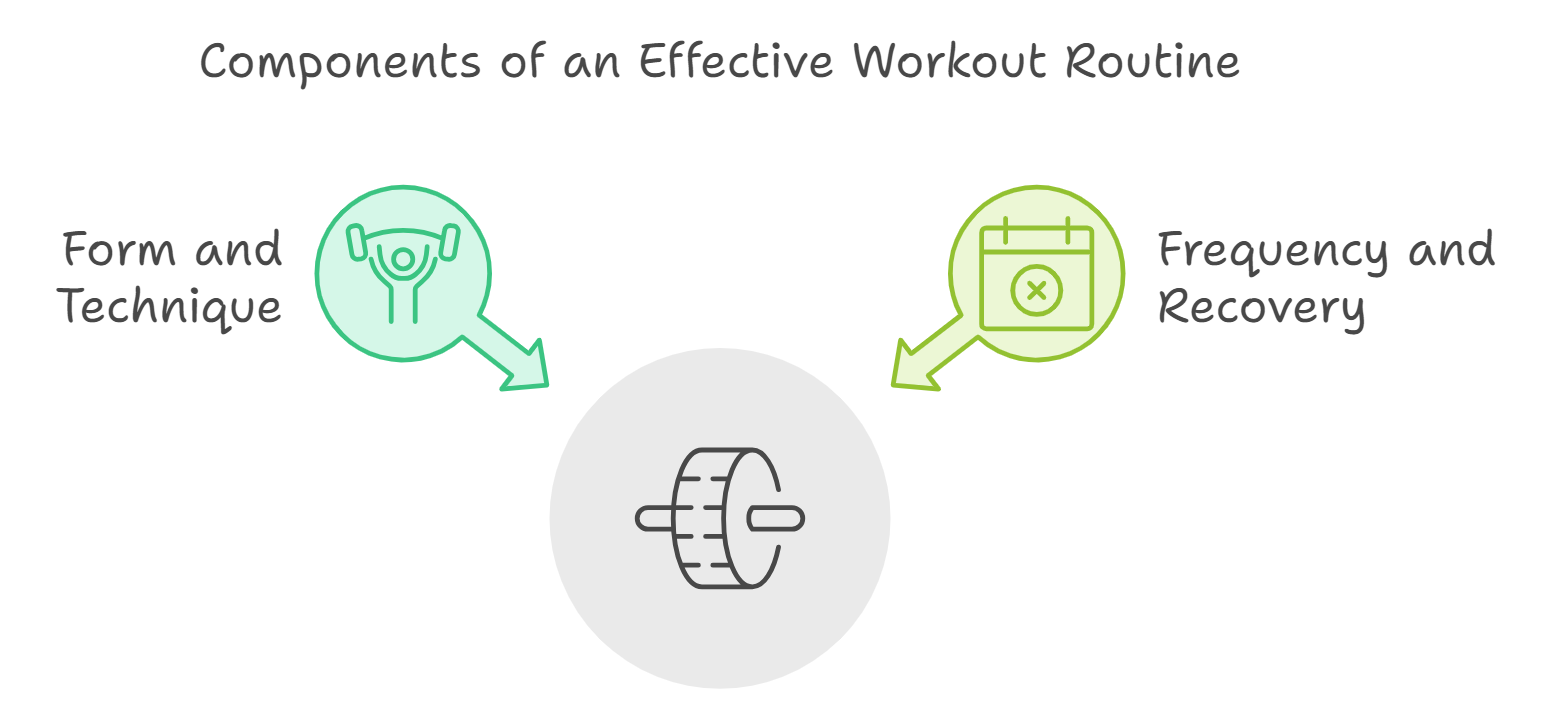Read Quick Answer
Short biceps have a muscle belly that ends higher up the arm, closer to the shoulder, while long biceps have a muscle belly that extends further down towards the elbow. The difference is mainly genetic and affects muscle shape and appearance.
Both types can be equally strong, but they may respond differently to various exercises and training techniques.
Long Head Bicep VS Short Head
Probably one of the most talked-about muscles in the fitness and bodybuilding domains would have to be the biceps. And while, without a doubt, they are vanity muscles, they aren’t strictly there to enhance the appearance of your arms—they actually play a vital role in movement and strength within your arms.
The bicep actually has two parts: the long head and the short head. Gaining an insight into your biceps’ anatomy can allow you to tailor your workouts a bit better.
The Bicep Muscle Structure
The two major parts composing the bicep include a long head and a short head. These two heads act together in flexion at the elbow and rotation of your arm.
It is important that the ratio between muscles and tendons makes up the general outlook and functionality of your muscles. Provided you have got a bigger rate of muscles in comparison with tendons, you might get a more expressed peak of the bicep.

Ratio of Muscle to Tendon and Its Significance
Now, it is the muscle-to-tendon ratio that does determine both the shape and function of your biceps. A higher ratio is actually going to bring about a shorter and also a more peaked type of bicep.
The lower the ratio, the more elongated and flatter the appearance may be. This ratio is genetically determined and you’re born with it.
How Genetics Influences Bicep Length
This can be highly determined by genetics: whether one has short or long biceps. The length of your muscle bellies and the points at which your tendons attach are determined by your genes.
This genetic makeup is what makes some people, even before they start training, to have biceps that are filled out or peaked in comparison with others.
How to Recognize Short and Long Biceps
Whether one has short or long biceps does not depend on aesthetics; it is related to muscle construction and their response to different exercises.
Visible Difference: Short and Long Biceps
The peak of the short biceps is set higher, and there is a space between the elbow and the muscle belly. Long biceps extend down closer to the elbow, filling out the upper arm completely from top to bottom.
Simple Tests to Determine Your Bicep Type
-
Elbow Flexion Test:
Flex your arm and notice how close the bicep peak is to your shoulder. The closer it is to your shoulder, the shorter your bicep.
-
Muscle Belly Test:
Relax your arm and measure the distance between your elbow crease and the beginning of the bicep. Normally, the shorter the gap, the longer the bicep.

Pros and Cons of long bicep vs short bicep
There are some advantages and disadvantages that both the short and long biceps types carry with them. Knowing them helps to bring in changes or pinpoints any training regime for perfect results.
Strength and Performance Considerations
Short biceps usually have an advantage because of better leverage for heavy weights due to their peak, which is rather higher, and the length shorter. This may make them a little stronger in some movements. A long biceps might still win in the areas of endurance or ongoing strength, which falls within a greater motion range, hence taking advantage of the length of their muscles.
Aesthetics and Bodybuilding
Also, from an aesthetic point of view, short biceps create a more significant, more dramatic peak, which happens to be the aim of bodybuilding. For a more balanced and natural appearance, full-looking biceps are preferred for the long type.
Risk of Injuries and Strain
It is essential to know the extent of injury risk in each type:
-
Common Injuries for Short Biceps:
Tendon strain and muscle tears from the highly focused amount of stress on a shorter muscle.
-
Common Injuries for Long Biceps:
Overuse injuries and tendonitis from the prolonged length of the muscle.

Training Strategies for Different Types of Biceps
Your bicep type might be telling you something about how you need to train to achieve maximum results.
Effective Exercises for Short Biceps
-
High-Intensity Training Techniques:
Gains are to be derived from exercises that work on maximum muscle contraction. These include preacher curls and concentration curls.
-
Isolation Exercises:
They also aid in focusing on the biceps more directly, making sure that every rep taken serves a purpose.
Effective Exercises for Long Biceps
-
Volume Training Techniques:
Long biceps do well in high-volume and higher rep ranges combined with exercises such as hammer curls and cable curls.
-
Compound Movements:
Add chin-ups and rows into your routine since these exercises tend to engage the whole arm for ultimate growth.
Personalizing Your Workout
One has to be working on a well-rounded workout routine that really accounts for form and technique.
-
Form and Technique are Important:
Proper form prevents injuries and has you target the biceps effectively.
-
Frequency and Recovery:
Ensure that the frequency of your workouts is balanced with the time needed for recovery to give your muscles space to repair and grow.

Myths and Misconceptions
There are many myths associated with bicep training and muscle length. Let us try to debunk some of the biggest ones.
Can You Change Your Bicep Length?
The answer is no—there is no possible way to alter your biceps’ length through training. The length of your muscles is genetically predetermined, therefore it had already been decided at birth and stays that way throughout your life.
Role of Supplements and Diet
While supplements and diet will help in muscle growth and recovery, it won’t do anything to alter your muscle length. Focus on a balanced diet and supplementation that’s right for you to help meet other fitness goals.
Expert Opinions and Case Studies
Sometimes, real-life examples or expert opinions are exactly what we need to see.
Fitness Professional’s Insights
Many trainers and fitness professionals reiterate the need for customised workout plans depending on the bicep type of the individual.
Real-Life Examples, Success Stories
Many bodybuilders and athletes will share their journey and modifications one has made to their training based on their bicep type, sharing inspiration and practical advice.
FAQ
How do I know if I have short or long biceps?
You can determine your bicep type using very simple tests like the elbow flexion test and the muscle belly test.
Are short biceps stronger than long biceps?
A short biceps may have an advantage over a long biceps in some movements, simply because of better leverage, but generally speaking, the difference in strength between the two is not dramatic.
Can I make my biceps longer with exercises?
No, the length of a bicep is genetically predetermined. Exercises can only improve the size and shape of muscles.
What are the best exercises to do if you have short biceps?
High-intensity and isolation exercises like preacher curls and concentration curls work well.
What are some good exercises for the long biceps?
Do some volume training along with compound exercises like hammer curls and chin-ups.
How do I avoid bicep injury?
Avoid injuries through proper form, technique, and balanced training.
How to Tell If You Have Long Or Short Biceps?
To determine if you have long or short biceps, observe the length of the muscle belly. Long biceps have a greater distance between the shoulder and the elbow, while short biceps appear more compact.
Conclusion:
This is a detailed format of the blog, structured in line with the outline provided, using the NEAT concept in a conversational tone without using the exact mentioned phrases. Let me know if you need any adjustments or further details!

